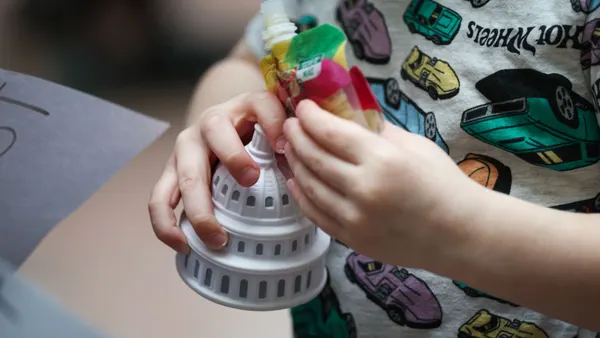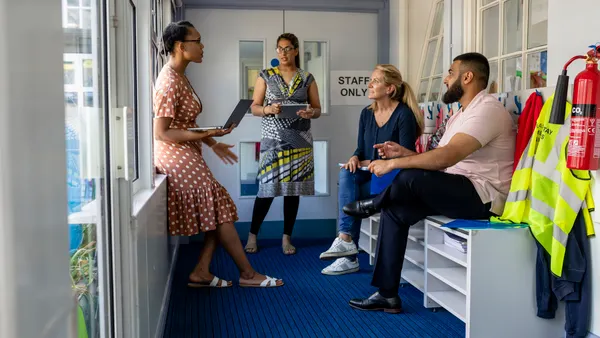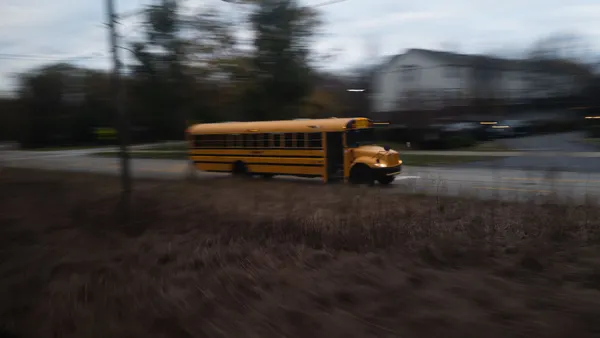Dive Brief:
- A proposal in the California Legislature would require public schools to keep on hand at least two doses of a medicine that reverses opioid overdoses, including those caused by illegal fentanyl.
- California Assemblyman Joe Patterson, who introduced the legislation, AB19, told CNN on Dec. 10 that requiring schools to carry naloxone hydrochloride or another "opioid antagonist" was one of several measures he plans to introduce regarding fentanyl.
- As fentanyl-related deaths increase across the country, many school systems are stocking naloxone and giving explicit warnings about fentanyl's harms to students.
Dive Insight:
Fentanyl is a powerful synthetic opioid that can be mixed into other drugs. The U.S. Drug Enforcement Administration has warned that some illicit pills are being made to look like candy and are being marketed to youth.
Nationally, 884 teens ages 14-18 died from illicit fentanyl and synthetics in 2021, according to data from the Centers for Disease Control and Prevention published in April in the Journal of American Medical Association.
"I would know nothing about this drug if it wasn't for a tragedy that we had in our own community," Patterson said. "I think just the education and getting the word out, and what's going on is half the battle, and I'm committed to doing that as well."
Patterson told CNN that the cost of stocking naloxone at schools across the state is estimated at $1.3 million. "This is really a nominal cost for our schools," he said. "I'm not really worried about the cost to be honest with you. I'm more concerned about the lives."
The bill will be before the California Legislature when it convenes Jan. 4 for the 2023 regular session.
California schools can already carry naloxone, and many do, Patterson said. The Los Angeles Unified School District announced in September that it planned to make naloxone — also known by the brand name Narcan — available at every campus, as well as to take other safety and support measures. The announcement was made after several students in the district died of suspected fentanyl poisoning.
In an October letter to superintendents and principals, State Superintendent Tony Thurmond said fentanyl deaths accounted for more than 80% of all drug-related deaths among the state's youth in 2021. "Most of our young victims ingested fentanyl accidentally, thinking they were using something less dangerous," Thurmond wrote. "It is the fastest growing cause of death for young people in our state, and we must lean in and confront this drug crisis now."
Thirty states have statutory language regarding access to naloxone in schools, according to a July report from the Legislative Analysis and Public Policy Association. Maryland, New Jersey and Rhode Island are among states that require schools to carry naloxone or other opioid overdose reversal medication. Naloxone is sprayed into the nostrils or injected under the skin to quickly reverse an opioid overdose.
The National Association of School Nurses' position on naloxone is that “the safe and effective management of opioid-related overdoses in schools must be incorporated into the school emergency preparedness and response plans."
The association, however, does not collect information about how often naloxone is used on school grounds, Linda Mendonca, NASN president, told K-12 Dive in October.
The U.S. Food and Drug Administration is currently reviewing whether to allow nonprescription use of certain types of naloxone.
Additionally, some in the medical field and in local governments support increased access to fentanyl test strips that can identify fentanyl in a drug. According to the Centers for Disease Control and Prevention, fentanyl test strips provide people who use drugs with information about fentanyl in the illicit drug supply so they can reduce their risk of overdose.







 Dive Awards
Dive Awards







